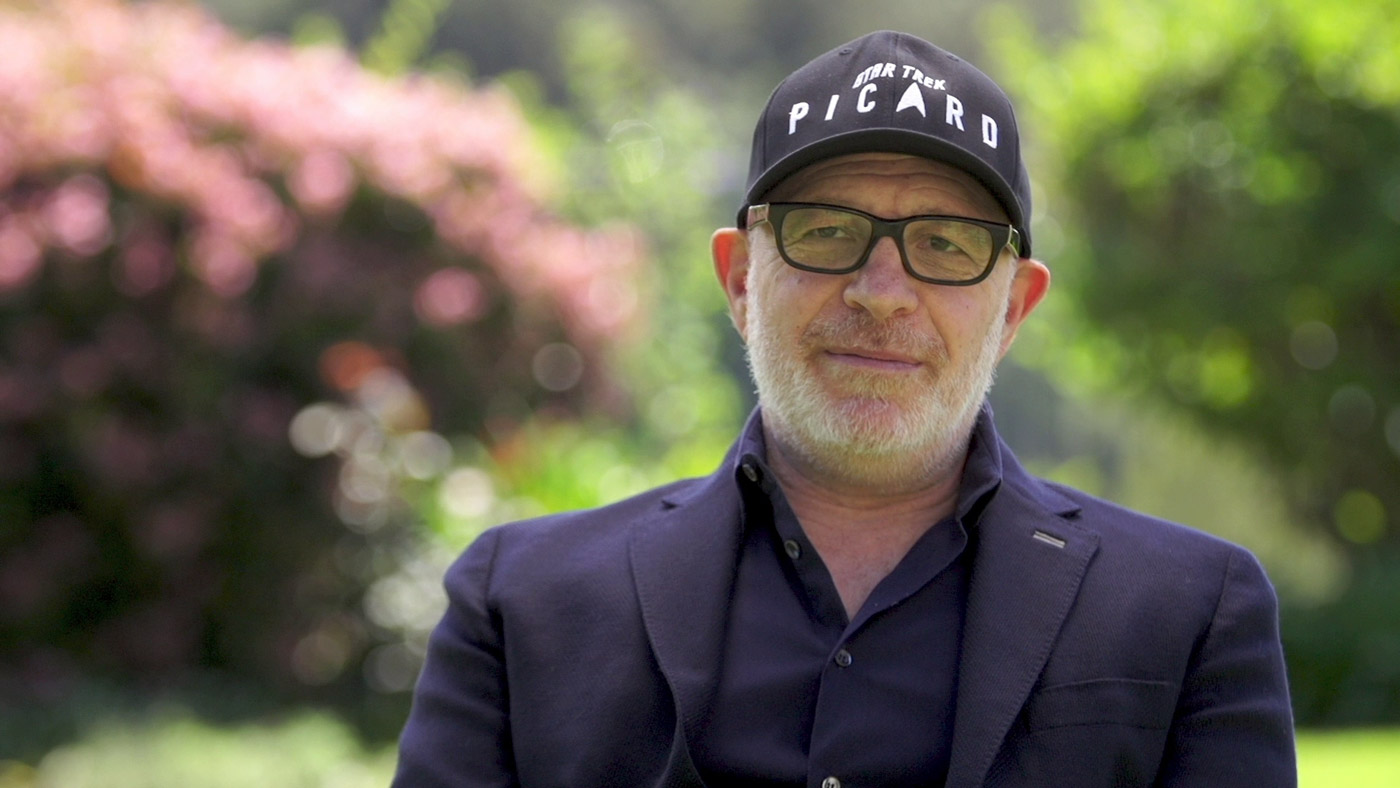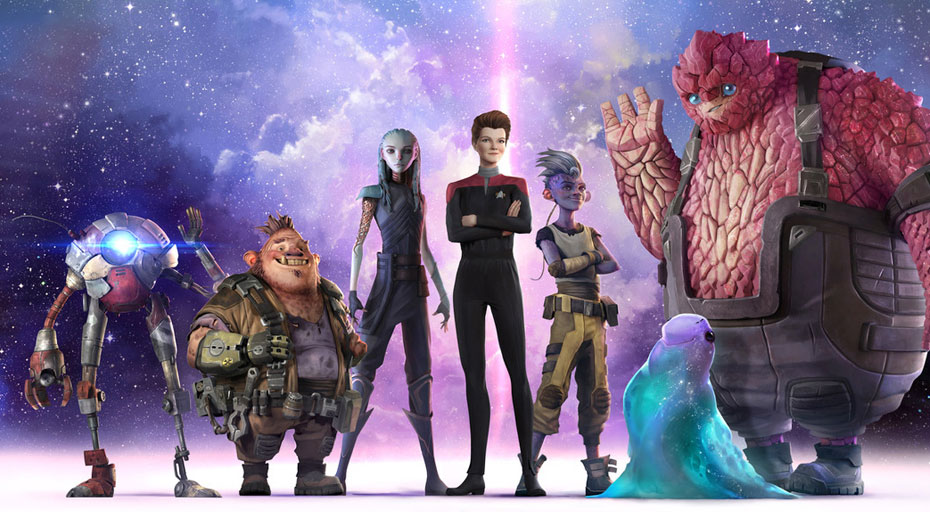While it’s a bit of a quiet time for fans of the Star Trek Universe — as the next set of new episodes isn’t due until Star Trek: Lower Decks returns for its second season in August — there’s plenty happening behind the scenes, as all five ongoing series are in production now on their upcoming episodes… in addition to the new Trek movie announced last week.
We got a bit of a hint into where things stand with Star Trek: Picard and Star Trek: Strange New Worlds this week, as the co-creator and executive producer of both series, longtime Secret Hideout collaborator Akiva Goldsman, spoke to The Hollywood Reporter about both shows on Monday.

As he first detailed back in May 2020, Goldsman reiterated how Strange New Worlds will stand apart from the season-long serialized storytelling formats of Star Trek: Discovery and Picard, styled more towards the classic Trek ‘story of the week’ structure.
“It’s unlike the other shows in that it’s really episodic… so [co-showrunner] Henry Alonso Myers and myself are trying to serve that. We’ve all become very enamored, myself included, with serialized storytelling. And I’m talking to you from behind the stage where we’re shooting ‘Picard,’ which is deeply serialized.
But ‘Strange New Worlds’ is very much adventure-of-the-week, but with serialized character arcs.
We want to welcome somebody who knows ‘Trek’ and make it even better because of the things we have, but we don’t want to alienate those who don’t. If you know ‘Next Gen,’ ‘Picard’ is more fun, but you don’t have to have watched ‘Next Gen’ to watch ‘Picard ‘— but by the time we get to episode six, you better have watched episodes one through five or your eyes are going to cross.
That’s not true with ‘Strange New Worlds,’ where you can drop in, watch one, drop out, then watch another one later.
Goldsman also shared some insight about how the Enterprise sets, uniforms, and overall design for Captain Pike’s crew — introduced in Discovery Season 2, which filmed in 2018 — have been adjusted for the new series, to help align the show’s look more towards its 1960’s-era source.
“It’s a fine line because obviously, we want to keep continuity with the storytelling and the style [of what was introduced in ‘Discovery’ Season 2], but we also want ‘Strange New Worlds’ to be a different show. It’s not ‘Discovery.’
There are a few more reach-backs (to the Original Series), and the uniforms have been adjusted slightly, the sets are slightly different. Remember the Enterprise existed as a little piece of [the show ‘Discovery’], but now it’s its own object.
When you close your eyes and think of the key sets and situations that you think of the Original Series, that’s what we’re looking to do.”
Strange New Worlds was also in the news after a guest star and a few show crewmembers had to quarantine after a positive COVID test result — luckily, the situation was limited and overall series production was not impacted.
Goldsman himself was not involved in that situation, but did comment in the THR interview how the show’s pilot — which wrote and is also directing — is not yet complete, due to pandemic mitigation efforts on set.
“[The pilot] was super fun [to direct] and I’ve finished almost all of it. There were certain scenes that we couldn’t shoot in Toronto because of quarantine — in terms of limits on the number of extras [in a scene] — that I’ll back and finish pretty soon, I hope.”

Shifting to Star Trek: Picard, filming its second season now, the writer offered a little insight into the next round of episodes, which will feature the return of Q (John de Lancie) and follow up on Jean-Luc Picard (Patrick Stewart) in his new artificially-created replacement body… which apparently won’t be such a big deal.
“[Picard’s new body won’t change his character.] We did fundamentally try to address that at the end of [last season]. He’s not Super Picard. We reset this congenital problem he lived with since ‘Next Gen’ and gave him the opportunity for rebirth, but it’s nothing more than a record as he might have been, were he not here.”
He also spoke about lessons learned from the first season of Picard, one which we know had to be greatly adjusted as production proceeded on the show, about how planning out a serialized season of television wasn’t handled as well as it could have been last year.
Late-season story developments resulted in a need for additional scripting and filming, to add new scenes and re-edit some of the year’s earlier episodes (like adding the ‘Mars attack’ to “Maps and Legends,” a large sequence not originally scripted or filmed).
“[We learned that we need to] figure out the end earlier. If you’re going to do a serialized show, you have the whole story before you start shooting. It’s more like a movie in that way — you better know the end of your third act before you start filming your first scene.
I think where our storytelling is complicated, if it is frustratingly so, it’s just our own fault for not doing it well enough. The great thing about plot complication and character excellence is they shouldn’t be mutually exclusive.
Even a really complicated plot should ultimately become invisible, that’s sort of the job of it.”
As for bringing back Q for next season, Goldsman shared a few thoughts about he and new co-showrunner Terry Matalas approached bringing back the classic Next Generation character, and how he’ll play into the new storyline.
“Terry Matalas and I don’t pretend that the interstitial years [since Q was last seen in ‘Next Gen’] didn’t happen. No, obviously, chronological time is less relevant to Q. The time between shows is probably not even the blink of an eye in Q time — if you even have Q time.
As we tried to evolve the other [returning] characters, the same is true of Q. This is a show of a different time with actors of a different age. We’re now talking about the issues that come up in the last [stage] of your life. We wanted a Q that could play in that arena with Picard.
There are a lot of people who think of Q as a trickster god, right? And he is. But he’s also a profoundly significant relationship in Picard’s life. There’s a lot of discussion in Picard season two about the nature of connectedness. Q’s kind of a great lightning rod for that because in some ways he’s one of Picard’s deepest — not deep in the same way that Riker is or Beverly Crusher was — but in its own uniquely, profoundly deep relationship.”

Meanwhile, Variety also took a brief look at many big-name entertainment brands this week, including Star Trek, as a new in-depth story on how studios and networks are managing their owned intellectual property (or IP) to maximize their market gains in the streaming video arena.
CBS Studios president David Stapf cautioned against outlets becoming “just” homes for familiar entertainment brands — while readers of this website may think of the ViacomCBS-owned Paramount+ as “the Star Trek streaming service,” there is a significantly wider breadth of content on that service (though we admit it’s not all top-tier programming).
Stapf adds a note of caution about leaning too heavily into existing intellectual property. If a streaming service becomes simply a “house of IP,” he says, then it won’t serve subscribers.
“I think [IP] is an important component, but not the only component,” Stapf says, when it comes to considering programming strategy. “With most IP, there’s a built-in fan base that already exists so you’re going to hopefully be bringing in new passionate subscribers. Having that known, big IP is incredibly helpful for new platforms. And, obviously, from a branding standpoint, it’s easier to market and publicize. But that said, I think every platform needs a combination of IP and originals.”
The Variety report also detailed how one of ViacomCBS’s efforts was to find ways to use shows like the kid-focused Star Trek: Prodigy to further gain business wins after the two companies merged in 2019, using its family-oriented themes to build viewership and grow franchise and brand loyalty.
The company set up committees of executives designed to find ways to exploit existing IP across multiple business sectors. A number of them are said to have engaged in a prolonged debate over whether the animated series “Star Trek: Prodigy,” originally ordered by Nickelodeon, would premiere first on the cabler’s linear channels or on the Nickelodeon-branded portion of Paramount Plus.
It is now set to debut on the streamer, then air later on cable. “Prodigy” was viewed by many as critical to the fate of the “Trek” franchise, as it’s the first bid to engage families — a path that can lead to ancillary products such as toys and theme park rides.

Finally Star Trek franchise boss Alex Kurtzman spoke to Variety for that article, in which he describes how all leaders in the behind-the-scenes Star Trek world are working now more closely than ever — from both the television and film sides of the franchise — after dust has started to settle from the ViacomCBS merger.
Alex Kurtzman… says the distinct tracks for film and TV projects have disappeared, [and] he knows what he’s talking about.
“I think vertical alignment has made it so that it’s impossible not to accept the reality that the line between movies and television is gone,” says Kurtzman. “It doesn’t mean that you can’t have a feature that is separate from television. But if they aren’t connected in some way, then you’re basically running two universes parallel as opposed to interconnected, and I think that those messages could potentially cancel each other out.”
Kurtzman says those who oversee the various “Star Trek” properties have begun strategizing to an even greater degree within ViacomCBS in the past year, with the launch of a monthly showrunners’ meeting. It allows everyone to see what parts of the “Star Trek” universe are being utilized on other shows.
“We make sure that those showrunners are coordinating so that they’re not stepping on each other’s toes,” he says.
Kurtzman’s comment about the lines between film and movie production being “gone” doesn’t strictly mean that the two halves of the Star Trek franchise are fully reunited, however.
To our knowledge, the Paramount Pictures division of ViacomCBS still retains management and control of Star Trek film development and production, separate from the television side of things managed by CBS Studios — but it’s good to hear that however separate those two tracks may still be inside ViacomCBS, the internal teams are working together in ways fans have been hoping now for years.
![]()
Star Trek: Discovery Season 4, Star Trek: Picard Season 2, Star Trek: Lower Decks Season 2, Star Trek: Prodigy Season 1, and Star Trek: Strange New Worlds Season 1 are in production now for Paramount+, while a new untitled Star Trek film is in development with Paramount Pictures for a 2023 release.
Keep coming back to TrekCore for all the newest updates on the franchise!
